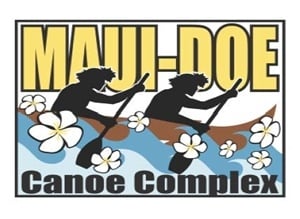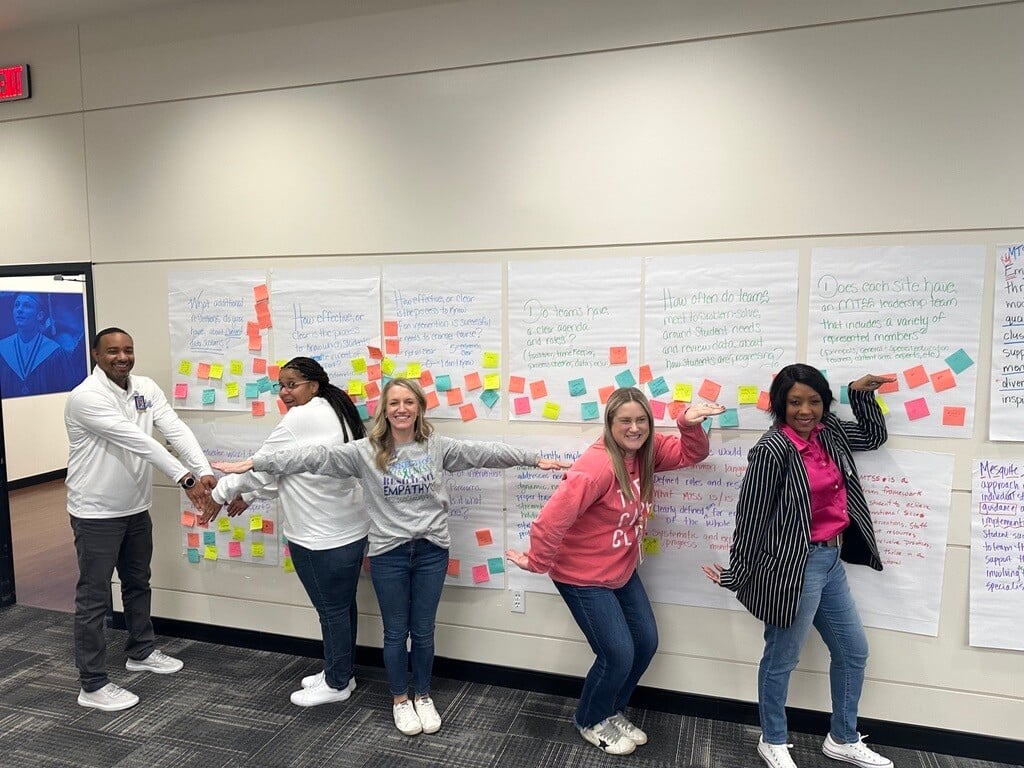Discover how the Hāna-Lahainaluna-Lāna‘i-Moloka‘i Complex Area—a district of 4,063 students and 11 schools on Maui, Lāna‘i, and Moloka‘i—implemented Student Success across all schools.
Challenges
-
The Hāna-Lahainaluna-Lāna‘i-Moloka‘i Complex Area needed to align with the Hawaii Department of Education’s state-wide implementation of HMTSS.
-
However, the complex area lacked a standardized system to identify students in need of interventions and progress monitor.
Solutions
Results
-
The Hāna-Lahainaluna-Lāna‘i-Moloka‘i Complex Area uses Student Success to ensure consistency across all schools.
-
The Complex Area moved from just a few educators using the platform across 2 schools to all educators across all 11 schools taking responsibility for intervention tracking—including counselors, administrators, teachers, and other support staff. This shift marks a major milestone in collective ownership and system-wide adoption.
-
Using the platform, teachers and administrators can see all student data in one location: attendance, academic performance, behavior, and life skills.
-
What started with just two schools and 56 interventions in 2022 has grown into a complex-wide effort—over 1,300 interventions created across all 11 schools by 2025.
-
In just two years, HLLM moved from completing 15 intervention plans to 747—marking a transformational shift in how student needs are identified and supported.
Challenges
Over the past several years, the Hāna-Lahainaluna-Lāna‘i-Moloka‘i Complex Area (HLLM) has built a foundation to implement the Hawaii Department of Education (HIDOE)’s vision for the Hawaii Multi-Tiered Systems of Support (HMTSS).
The HMTSS is a data-informed, team-based decision-making framework for achieving positive outcomes for every student through a layered continuum of evidence-based practices. It consists of four core components:
- Foundational beliefs
- Data-informed team-based decision-making
- Universal screening and progress monitoring
- Multi-tiered system of evidence-based practices
Additionally, the Hawaii DOE Strategic Plan:
- Has a desired outcome that all students be proficient in reading by the end of third grade, and those who are not proficient receive necessary and timely support to become proficient.
- Has a desired outcome that all students are proficient in mathematics by the end of eighth grade, and those who are not proficient receive necessary and timely support to become proficient.
Given these frameworks, HLLM needed to standardize its implementation of HMTSS. Some schools were just starting to create HMTSS teams; others had systems in place and wanted to dig deeper into data. Additionally, schools were using a range of tools and platforms to identify students in need of interventions and progress monitor, such as in-depth school-created spreadsheets.
“It’s crucial that we systemize processes, and we’re constantly working to make that happen,” says Francine Hughes, a Complex Area Resource Teacher at HLLM. “How can we, as a complex area, move forward together?”
Hughes and HLLM leadership recognized they needed a shared system to support the complex area’s vision for HMTSS. So, they decided that all HLLM schools must use Panorama Student Success.
Solution
Hughes notes that HLLM is still at the beginning stages of implementing Student Success. However, the school and complex area teams have already seen enormous benefits from using the platform to support their vision for HMTSS.
“Our Complex Area Support Team can see where data fits into our HMTSS. We share that information with schools, so schools can see which elements of their work fit into each component of HMTSS,” says Hughes.
This is visualized in the below diagram, which shows how HLLM’s Complex Area Support Team provides support to schools in a connected way. This support is provided through Complex Area HMTSS sessions and content-specific PLCs for HMTSS Team members from all schools, while also providing support at individual schools.

Diagram from the Complex Area
“We want to support the whole child and have a holistic view of students—Panorama, with all data in one place, empowers our teams to do that,” says Hughes.
The platform, a solution proven to improve reading and math scores, provides easy-to-interpret data in one place, so staff will have more capacity to deliver proactive student supports. School teams at HLLM can use that data to spark conversations that lead to meaningful action.
“This shared data is especially important for secondary schools. Students may have six different classes, and it’s challenging for teachers to know what’s happening in other classrooms,” says Hughes. “Panorama helps teams make data-informed decisions. It generates conversations that supplement qualitative data and goes beyond hunches—now we have hard data to inform decision-making and align practices.”
.png?width=772&height=506&name=student%20overview%20life%20skills%20(3).png)
Panorama Student Success (demo data displayed)
Panorama: A Partner in the Process
However, introducing the new platform complex-wide was a substantial change for many schools. Teams expressed concern about inputting data and needed guidance to shift from their current systems to Panorama.
Panorama’s Strategic Advising Team has supported this shift by helping educators and administrators embed Panorama’s tools into their day-to-day practice. When contracting with Panorama, Hughes realized HLLM needed support implementing both the platform and Panorama’s MTSS expertise in tandem. As a result, the Strategic Advising Team continues to guide both sides of HLLM’s journey: building consistent platform usage and strengthening HMTSS systems.
"The team has been so helpful, kind, patient, and flexible," says Hughes of the Strategic Advising Team. "And great under stress! They are easy to talk with, and a partner in our journey."
These efforts are rooted in a shared, long-term commitment—across district leaders, school teams, and Panorama—to create systems that endure beyond a single school year. Rather than one-time initiatives, the changes underway are focused on refining a sustainable process and ensuring that every school is equipped to keep those systems running year after year. And through the partnership with Panorama's team, HLLM has been able to level up its HMTSS, integrating Student Success into HMTSS processes in support of student outcomes.
Results
Leadership at HLLM recognized that implementing a new system would require sustained support across all schools. Since prioritizing that support in the form of professional development, resources, and ongoing training, the complex area has seen remarkable growth in platform usage—resulting in stronger support for students.
From 2022 to 2025, HLLM dramatically expanded its use of Panorama’s platform to support students. Intervention creation grew from just 56 to over 1,300, and the number of completed intervention plans surged from 15 in 2022–23 to 747 in 2024–25. What began in just two schools now spans all 11 schools across the complex area—reflecting a system-wide commitment to consistent, sustainable support for every student.
At HLLM, all educators across all 11 schools take responsibility for intervention tracking—including counselors, administrators, teachers, and other support staff. This shift marks a major milestone in collective ownership and system-wide adoption.
Turning Insight Into Action: How Schools are Using Student Success Every Day
School teams are getting creative in how they use Student Success. Some educators are leveraging the platform’s visible, comprehensive data to guide conversations during family conferences. Others are using it to build a more connected and caring school climate—for example, tracking student birthdays so teachers and staff can celebrate them collectively.
Educators are also using the platform to drive more targeted, strategic action. Schools have created student groups to plan and coordinate interventions more effectively. Support notes are helping teams document outreach efforts, especially in alignment with statewide attendance policies, and ensure that communication with families is consistent and tracked.
Across the complex area, various support staff have found ways to integrate Student Success into their day-to-day work. School psychologists, social workers, McKinney-Vento liaisons, and other specialists are using the platform to identify students in need and tailor their interventions.
Some teams have gone even further—embedding DOE strategy lists into the system so everyone is on the same page about which interventions to use. Together, these efforts reflect a shift from simply identifying students to taking coordinated, sustained action across roles to support them.
Building Acceptance, Strengthening Practice, and Sustaining Support
Hughes says that the planned, intentional rollout of the platform has been instrumental in building acceptance and staff capacity. And as usage has grown, so has the focus on deepening the quality of implementation. Administrators are asking important questions—like how to check that teachers are actually engaging with the platform and using it to inform student support.
Now that teams are more confident in the system, they’re ready to go further: using MTSS team agenda templates, focusing on the quality of interventions being delivered, and improving progress monitoring practices. What once felt like a compliance task is now seen as a meaningful tool.
There’s a shared understanding that the Complex Area Support Team will stay engaged—not as enforcers, but as collaborators working alongside schools to build strong, sustainable systems. The Support Team now regularly references Student Success data in ongoing conversations with educators, using it to coach teams, refine strategies, and strengthen overall support for students.

Panorama's Intervention Dashboard in Student Success (demo data displayed)
“We’re starting small, working with teams at each building,” says Hughes. “Systems change takes a while—it’s not a quick turnaround, and that’s an important perspective–that change is not easy and doesn’t happen overnight. It’s a slow, consistent movement.”
Hughes notes that Panorama’s team of advisors continue to be key partners. The team is investing in creating relationships throughout the complex area, bringing a user-friendly data platform to the Complex Area level, and customizing presentations to each school’s needs.
“That differentiation and understanding of what will work for individual schools creates acceptance,” says Hughes. “And Panorama tailors sessions to make them personalized. That level of personal touch makes training feel more embedded across the complex area. Our work with Panorama isn’t just about the platform—it’s also relationship-based. That partnership is key to our success.”







